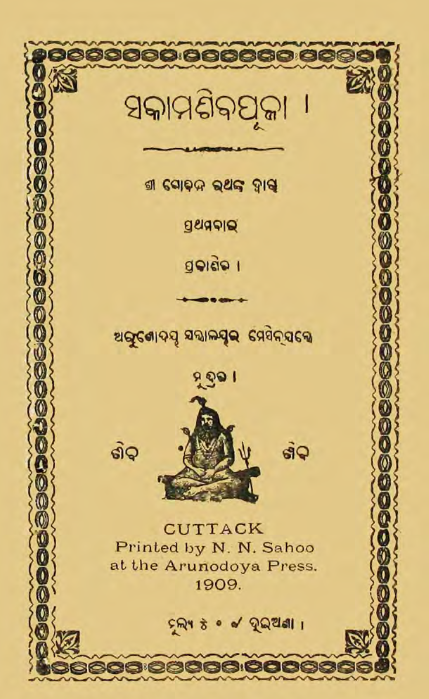Published in 1909, Sakama Shibapuja marked a significant moment in Odia literary history, not only for its content but also for its role in the translation movement that sought to make Indian spiritual texts more accessible to the common people. This work is a translation of a classical text dedicated to Lord Shiva, intertwining devotion, philosophy, and cultural practices surrounding the worship of this revered deity.
During the late 19th and early 20th centuries, India was undergoing a renaissance in literature, art, and culture. Spirituality and religion were paramount in people’s lives, with a growing interest in making sacred texts comprehensible to wider audiences. Sakama Shibapuja, embodying this spirit, was an effort to translate profound philosophical ideas into accessible language, bridging the gap between the elite and the common folks. The translator aimed to demystify the intricate rituals and beliefs associated with the worship of Lord Shiva, thereby strengthening devotional practices among the Odia population.
At its core, Sakama Shibapuja focuses on the veneration of Lord Shiva, portraying him as the ultimate source of grace and protection. The text emphasizes the significance of devotion and the various forms of worship one can engage in to seek the blessings of Shiva. What makes this translation particularly noteworthy is its ability to elucidate the underlying philosophy of Shiva-worship—an amalgamation of reverence, desire, and spiritual pursuit.
The term Sakama translates to with desire, indicating a unique perspective on worship. Instead of presenting devotion as a devoid of personal desires, the text acknowledges the human quest for fulfillment and the understanding that divine blessings can help achieve both spiritual and material goals. This nuanced approach allows readers to find solace in their desires while encouraging them to maintain a focus on spiritual elevation.
Sakama Shibapuja also serves as an essential reflection of Odia culture and its traditions surrounding the worship of Lord Shiva. With detailed descriptions of rituals, festivals, and modes of worship, the translation not only preserves the spiritual essence but also immerses readers into the rich tapestry of Odia life. It highlights local customs and practices, enhancing cultural identity and fostering a sense of community among devotees.
The literary style employed in Sakama Shibapuja is characterized by its poetic language and rhythmic flow, making it a joy to read. The translator’s adeptness at weaving lyrical expressions with philosophical depth allows for a captivating experience. This work not only stands apart as a translation but also as a piece of literature that contributes to the broader dialogue within Odia literary canon.
Furthermore, Sakama Shibapuja has influenced subsequent generations of writers and devotees, inspiring a revival of interest in classical texts and spiritual practices. Its translation paved the way for more works that explore the intersection of devotion, culture, and literary expression, thereby enriching Odia literature.
Books Info
| Books name | Sakama Shibapuja / ସକାମଶିବପୂଜା |
| Author | NA |
| No Of pages | 41 |
| Publisher | Sri Gobinda Rath |
| Publication | 1933 |
| Printed At | Arunodoya Press |
| Distributor | NA |

